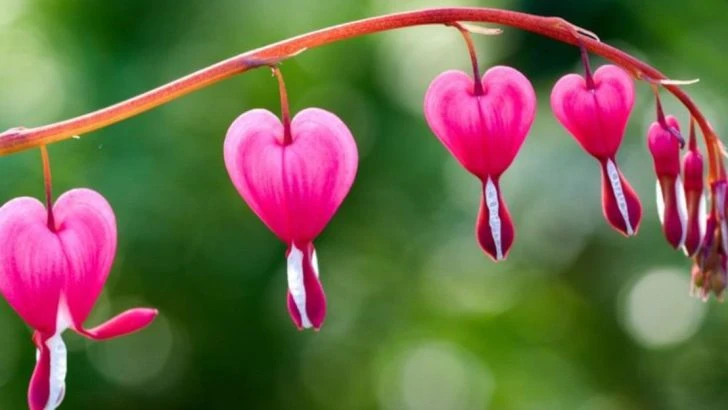Imagine a garden that bursts into colorful blooms year after year—without having to replant! That’s the beauty of perennial flowers. Unlike annuals that need to be replaced each season, perennials return every year, making them a low-maintenance and cost-effective way to keep your garden looking stunning.
Whether you’re looking for vibrant spring blossoms, summer showstoppers, or fall-blooming beauties, there’s a perennial flower for every season and climate. From classic favorites like lavender and peonies to lesser-known gems, these hardy plants add texture, fragrance, and long-lasting beauty to any garden.
In this article, we’ll introduce you to 19 gorgeous perennial flowers that will keep your garden in bloom year after year—with minimal effort!
Peony
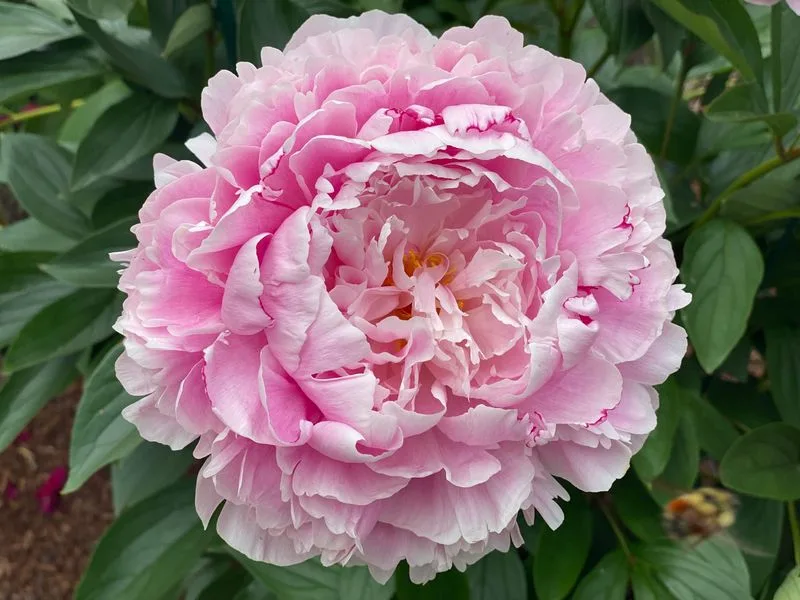
With its lavish blooms, the peony is a garden favorite, offering an air of elegance and grace. Each spring, these flowers burst forth with large, fragrant blooms that captivate the senses. The peony is perfect for those who want to make a bold statement in their garden without much effort. Plant them in well-drained soil and enjoy their beauty as they flourish year after year. Once established, they require minimal care, making them an ideal choice for busy gardeners.
Daylily
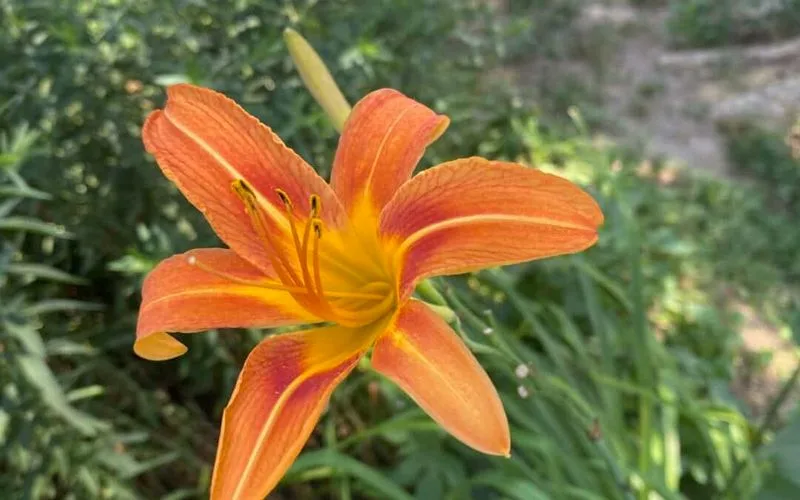
Daylilies are the epitome of resilience, thriving in diverse conditions. Their trumpet-shaped flowers come in various colors, each lasting just a day, but new blooms appear continuously. This makes the daylily a dynamic addition to any garden. They are easy to care for, requiring little more than regular watering and occasional deadheading. As one of the most adaptable perennials, daylilies bring life and color, making them a favorite for garden enthusiasts seeking low-maintenance beauty.
Hosta
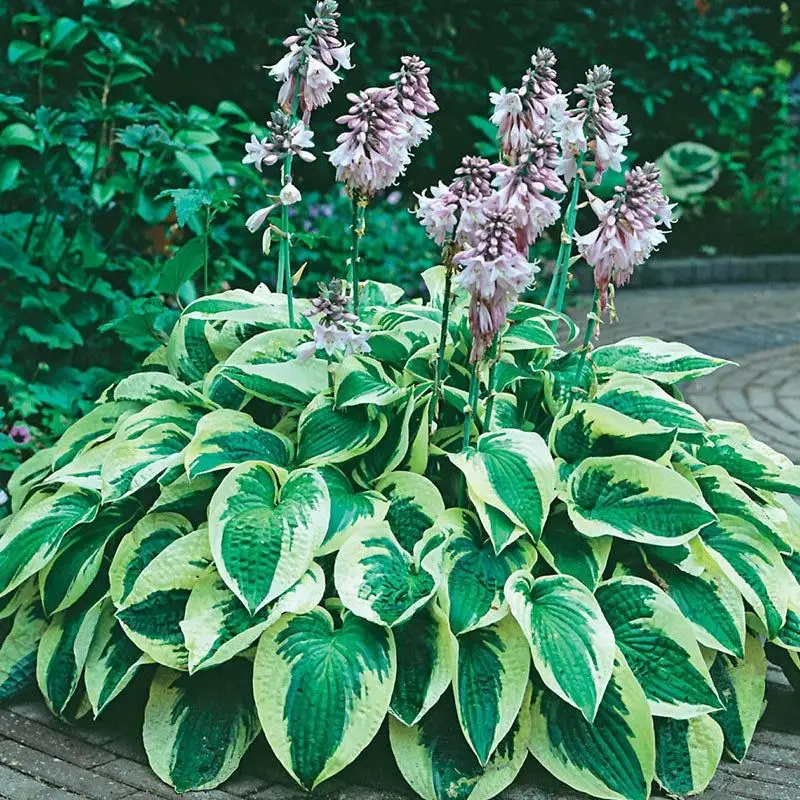
Hostas are renowned for their lush foliage and come in a variety of sizes and colors. Ideal for shaded areas, they add texture and depth to gardens with their broad, variegated leaves. Though primarily grown for their foliage, hostas also produce delicate, lavender-colored flowers. They thrive in moist, well-drained soil and require minimal attention. Their ability to withstand shade and occasional drought makes hostas a versatile choice for gardeners looking to fill in those less sunny spots.
Black-Eyed Susan
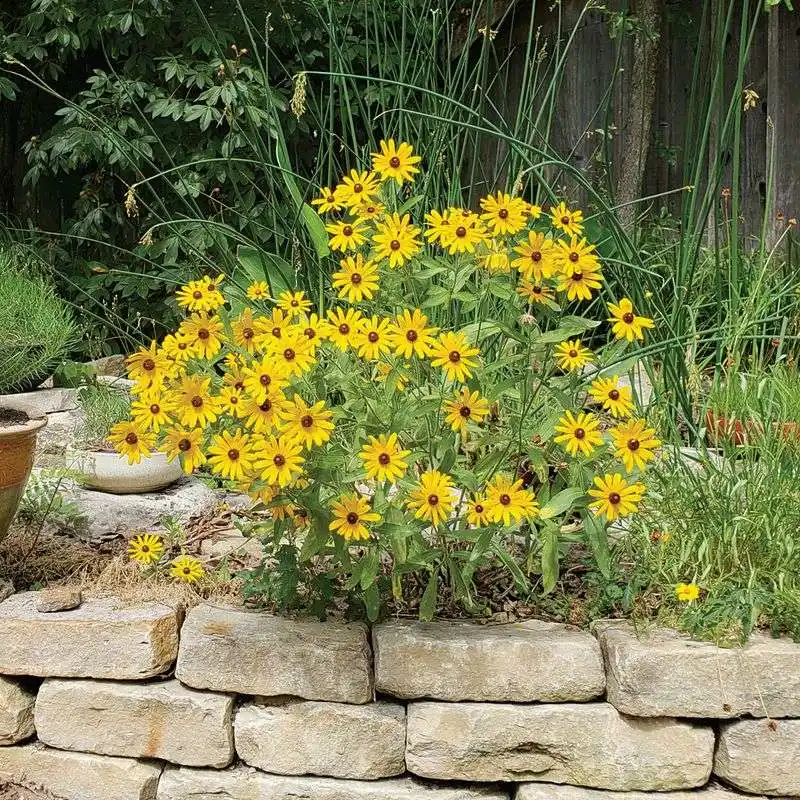
The black-eyed Susan is a symbol of warmth and sunshine, its bright yellow petals providing a cheerful sight. These hardy perennials are easy to grow and maintain, making them a staple in many gardens. They attract butterflies and pollinators, enhancing the ecological value of your garden. Plant them in full sun with well-drained soil, and they will reward you with blooms from mid-summer to fall. Their vibrant display is sure to uplift any garden space.
Lavender
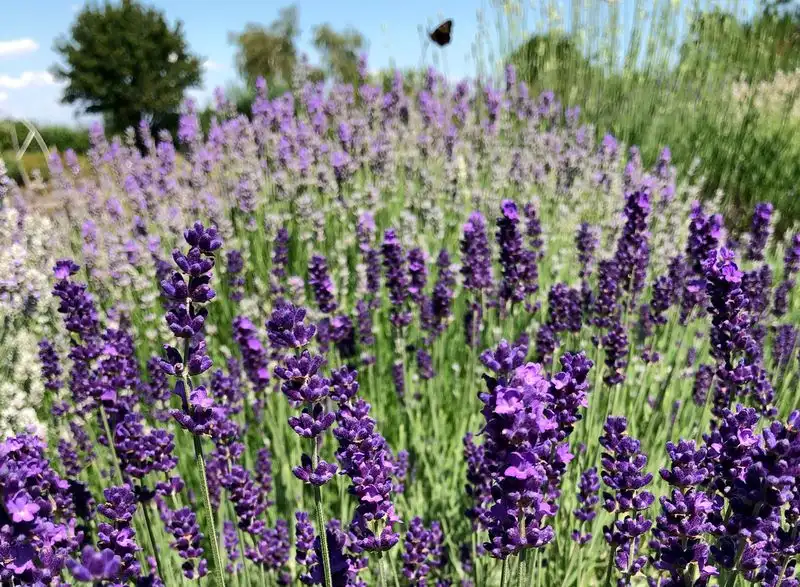
Lavender brings a touch of the Mediterranean to your garden with its distinctive scent and soothing hues. This perennial thrives in full sun and well-drained soil, offering both aesthetic and aromatic pleasure. It’s known for its drought resistance and ability to attract bees and butterflies. Regular pruning will keep the plants compact and full of blooms. Incorporating lavender into your garden means enjoying a perennial that offers much more than just visual appeal.
Coneflower

Coneflowers are beloved for their daisy-like appearance and vibrant colors, ranging from purple to pink and white. These perennials are tough and drought-resistant, thriving in full sun and poor soil. Their blooms attract pollinators, making them a great choice for eco-friendly gardens. Aside from their beauty, coneflowers are known for their medicinal properties, often used in herbal remedies. With minimal maintenance, they can brighten up any garden with their long-lasting flowers.
Yarrow
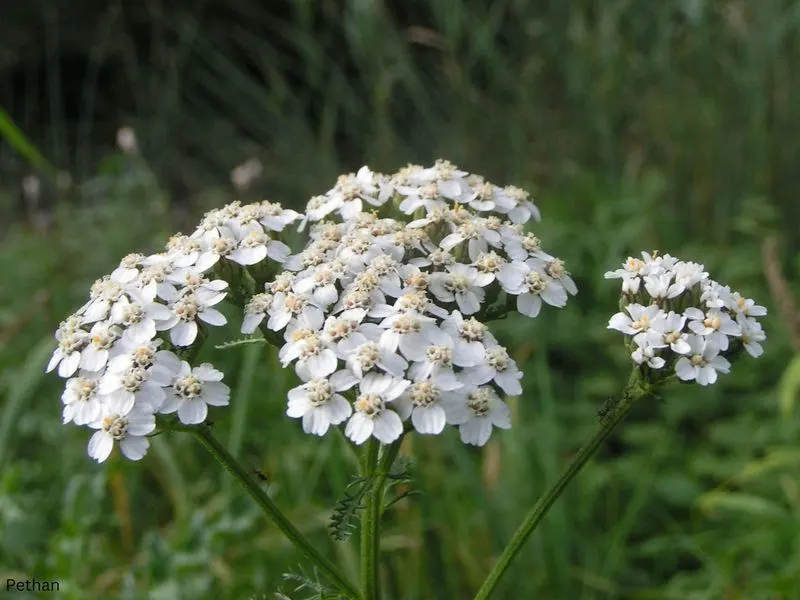
Yarrow is a versatile perennial known for its feathery foliage and clusters of tiny flowers. It thrives in sunny areas and is drought-tolerant, making it perfect for low-water gardens. Yarrow blooms from late spring to early fall, providing a long season of interest. Its flowers can be used in dried arrangements, adding to its appeal. This plant also attracts beneficial insects, contributing to a healthy garden ecosystem. Yarrow’s hardiness and beauty make it a must-have for gardeners.
Sedum
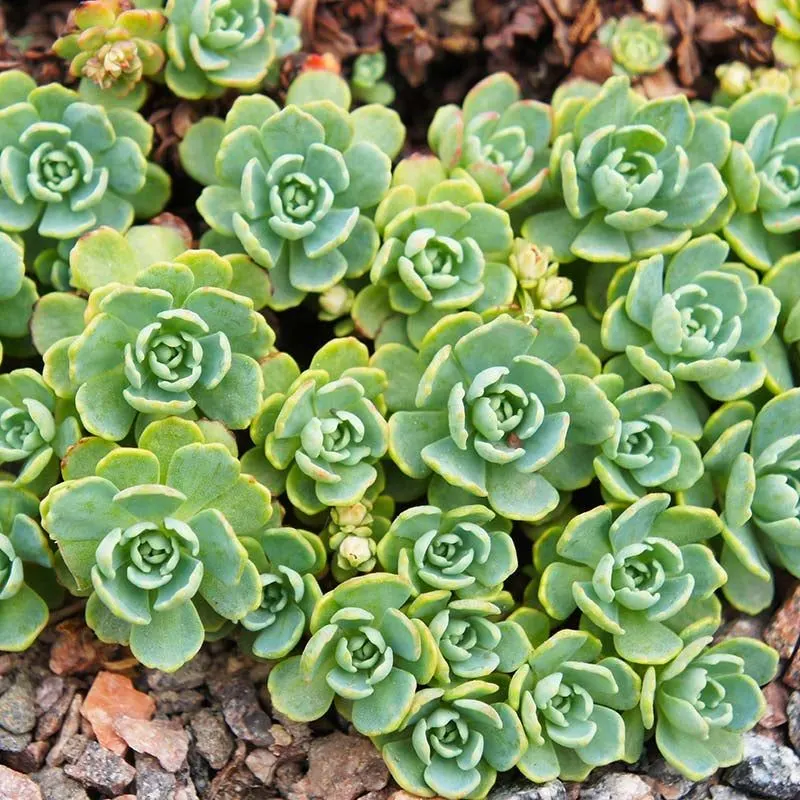
Sedum, often called stonecrop, is perfect for rock gardens and borders with its succulent-like leaves and star-shaped flowers. They require little water and thrive in poor soil, making them ideal for those challenging spots in the garden. Sedum’s blooms transition from summer to fall, providing interest even as other plants fade. Their low-growing habit and vibrant colors make them a favorite among gardeners seeking an easy-to-maintain yet visually appealing plant.
Bleeding Heart
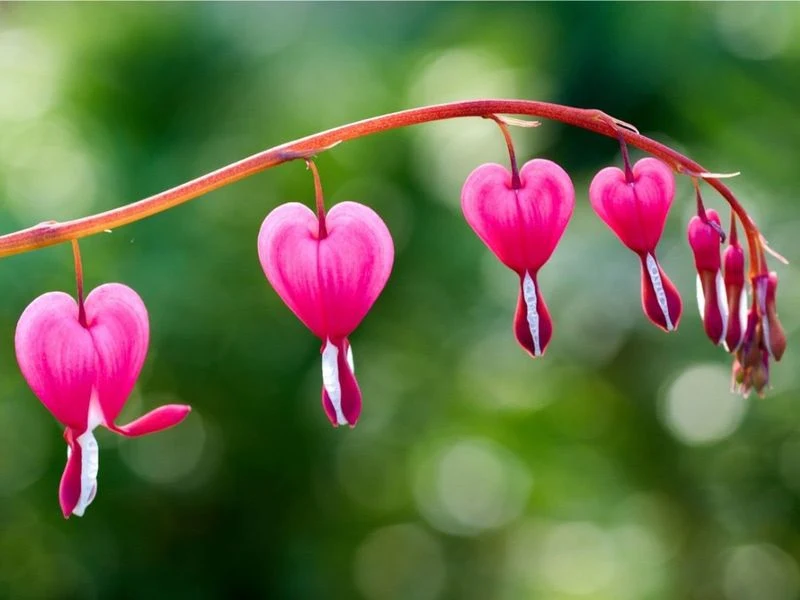
Bleeding hearts enchant with their unique, heart-shaped flowers and delicate arching stems. Best suited for shaded gardens, these perennials offer a romantic touch to any landscape. Their blooms appear in late spring, lasting several weeks, and are often followed by attractive foliage. Although they require moist, well-drained soil, bleeding hearts are relatively low maintenance. Their distinct appearance and shade tolerance make them a cherished addition to woodland gardens and shaded borders.
Astilbe
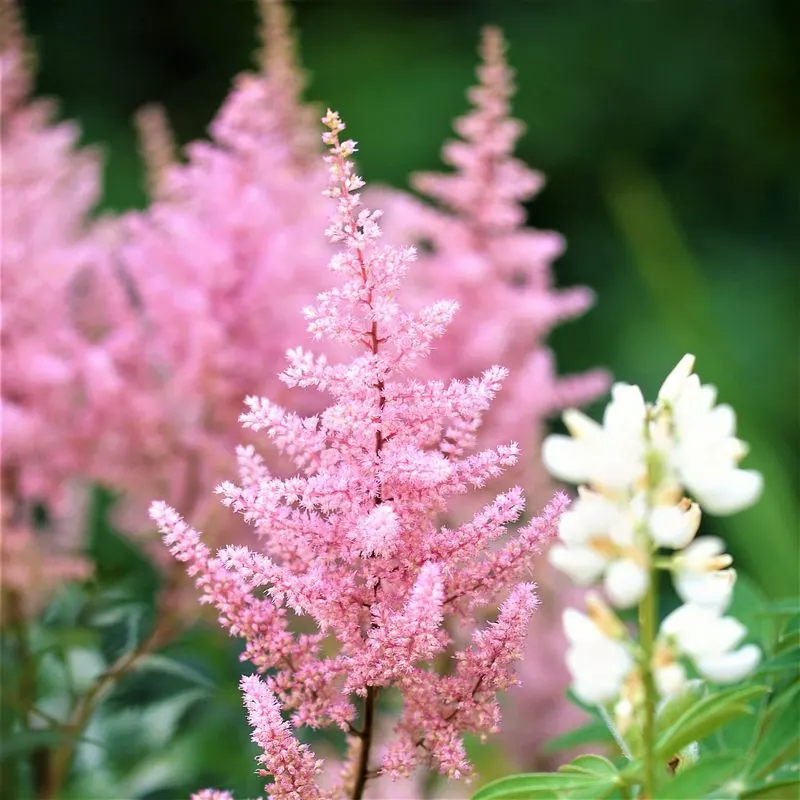
Astilbe adds a splash of color to shaded and damp areas with its feathery plumes. These perennials are known for their fern-like foliage and vibrant flowers that bloom in summer. They thrive in rich, well-drained soil and prefer partial to full shade. Regular watering will keep them thriving, as they don’t tolerate dry conditions well. Astilbe’s ability to brighten shady spots with minimal care makes it an ideal choice for creating focal points in less sunny garden areas.
Phlox
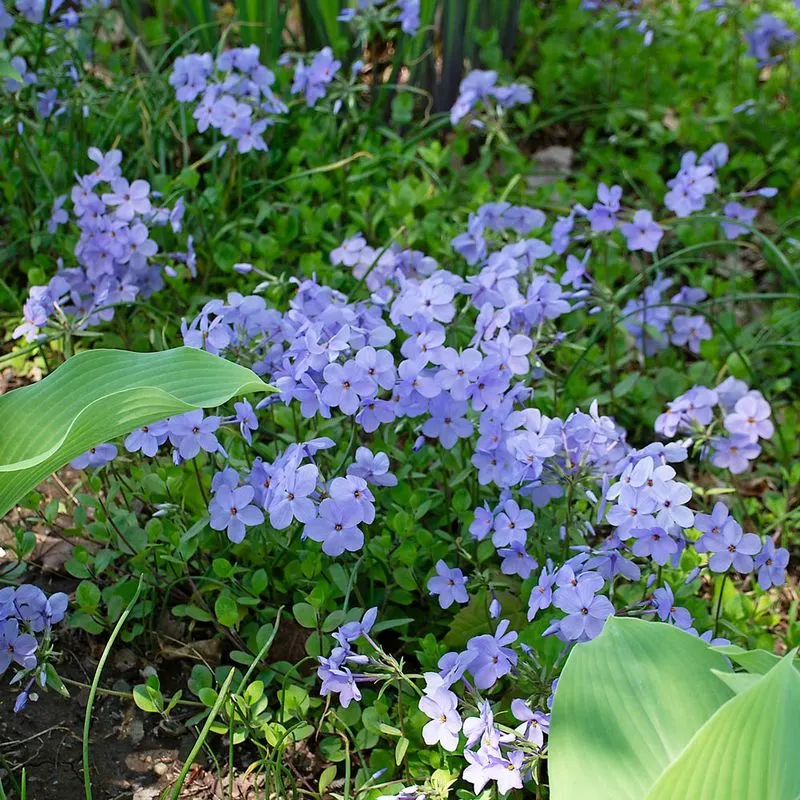
Phlox offers a burst of color and fragrance to any garden, attracting butterflies and hummingbirds with its nectar-rich blooms. These perennials thrive in full sun and well-drained soil, making them an excellent choice for borders and cottage gardens. With a long blooming period from mid-summer to fall, phlox ensures your garden remains vibrant. Regular deadheading will promote further blooms. Its resilience and ability to attract wildlife make phlox a beloved addition to gardens seeking continual color.
Iris
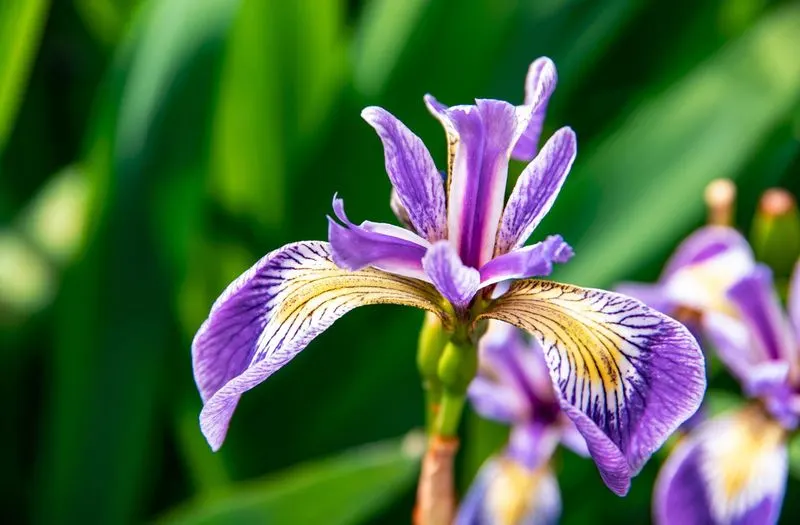
Iris flowers captivate with their intricate patterns and regal stature. These perennials thrive in sunny locations and well-drained soil, providing a splash of color in spring. Their sword-like foliage adds texture even after blooming. Irises are low maintenance, requiring only occasional division to prevent overcrowding. Their striking appearance and easy care make them a gardener’s favorite. Whether planted in groups or as standalone features, irises bring elegance and drama to any garden setting.
Hellebore
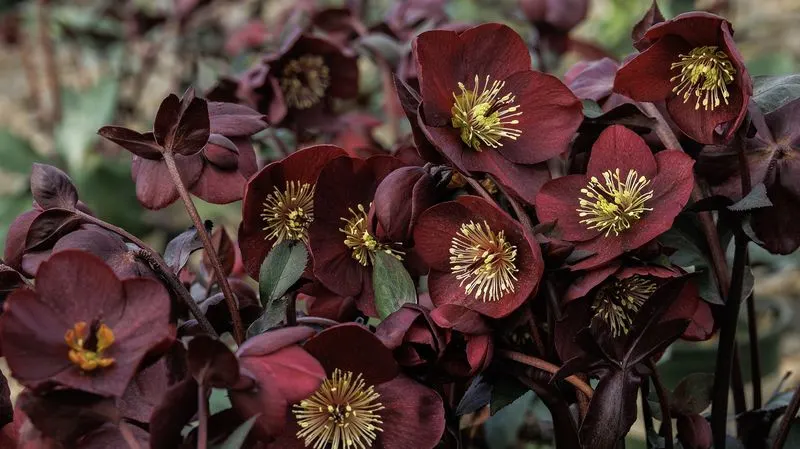
Hellebores, often called Christmas roses, bloom in late winter to early spring, brightening the garden when little else does. These perennials prefer shady spots and are tolerant of a variety of soil conditions. Their nodding flowers and evergreen foliage provide year-round interest. Although slow to establish, hellebores are long-lived and require minimal care once settled. Their ability to bloom in the coldest months makes them a cherished addition to winter gardens, offering hope and color.
Bee Balm
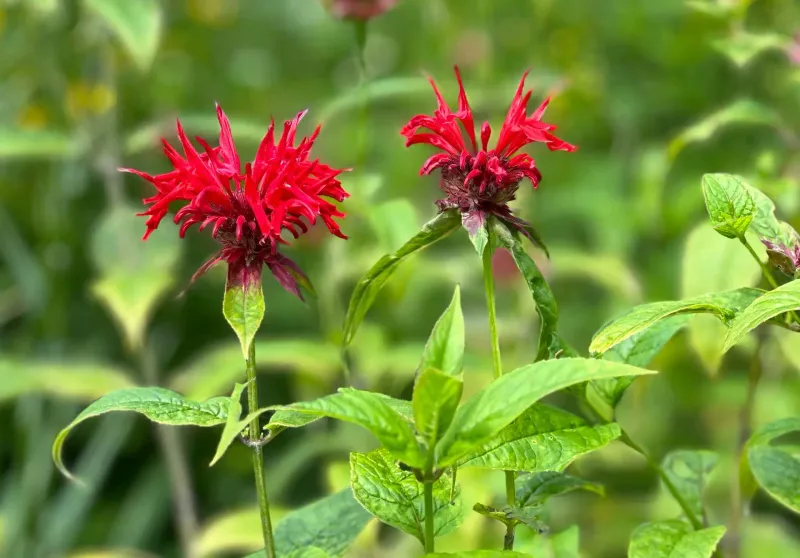
Bee balm is a showstopper with its vibrant, shaggy blooms in reds and pinks, attracting bees, butterflies, and hummingbirds. This perennial prefers full sun and moist, well-drained soil, making it ideal for pollinator-friendly gardens. Bee balm’s aromatic foliage can be used in teas and potpourris, adding to its versatility. Regular deadheading encourages more blooms throughout the summer. Its ability to attract pollinators and add a burst of color makes bee balm a favorite for wildlife gardens.
Shasta Daisy
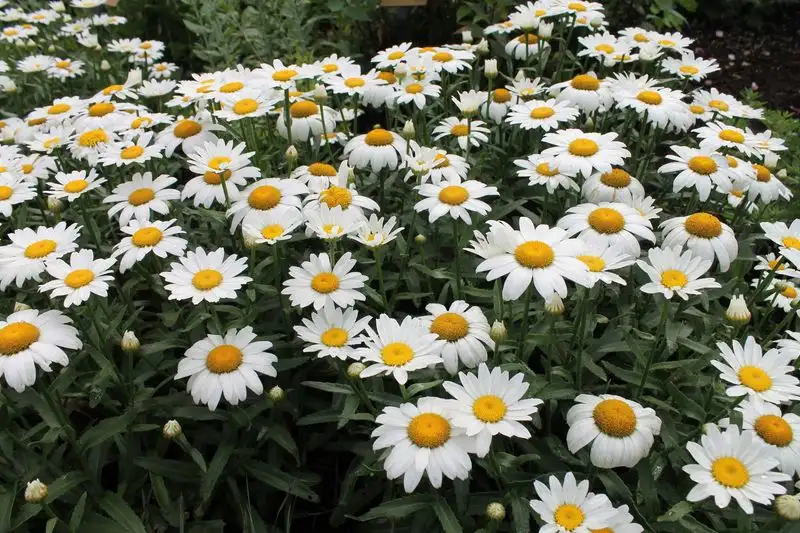
Shasta daisies bring a classic charm to gardens with their crisp white petals and cheerful yellow centers. These perennials are easy to grow, thriving in full sun and well-drained soil. They bloom from early summer to fall, providing a long season of interest. Deadheading will extend their blooming period, ensuring your garden remains lively. Shasta daisies are drought-tolerant once established, making them a reliable choice for gardeners looking to reduce water usage while maintaining beauty.
Clematis
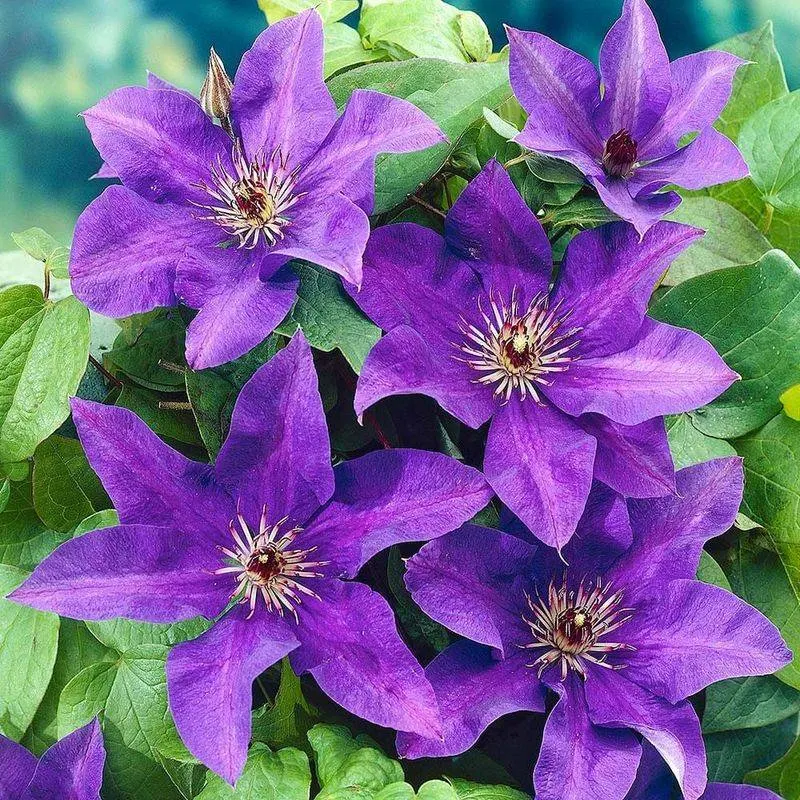
Clematis vines are known for their stunning flowers and versatile climbing ability. They thrive in sunny locations with their roots shaded, making them perfect for trellises, fences, and arches. Clematis offers a wide range of colors and bloom times, ensuring continuous interest. Regular pruning is essential to maintain their shape and encourage more blooms. With their striking flowers and adaptability, clematis vines can transform vertical spaces into living tapestries, adding depth and color to gardens.
Anemone
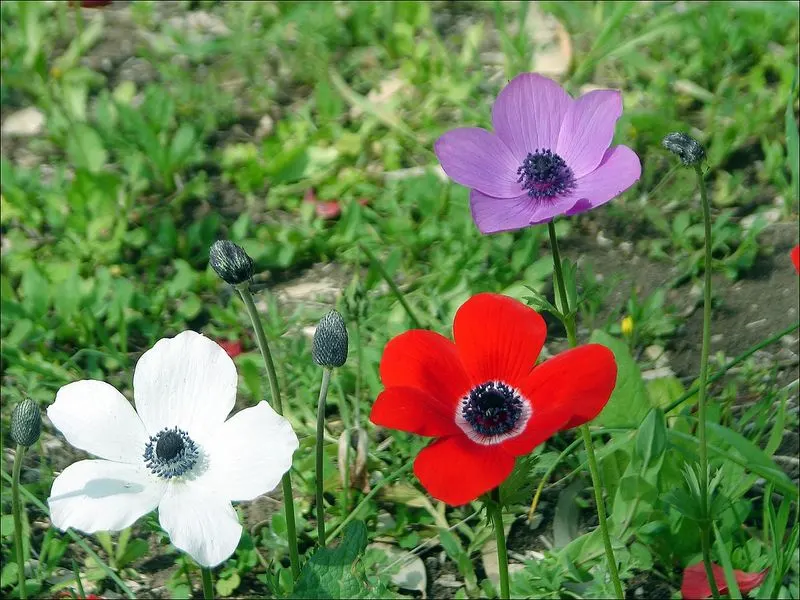
Anemones, with their poppy-like blossoms, add a whimsical touch to gardens. These perennials prefer partial shade and well-drained soil, blooming in the fall when most flowers have faded. Their delicate appearance belies their toughness, as they return year after year with minimal care. Anemones are perfect for naturalizing areas, creating swathes of color that sway in the autumn breeze. Their easy-going nature and extended bloom period make them a valuable addition to fall gardens.
Rudbeckia
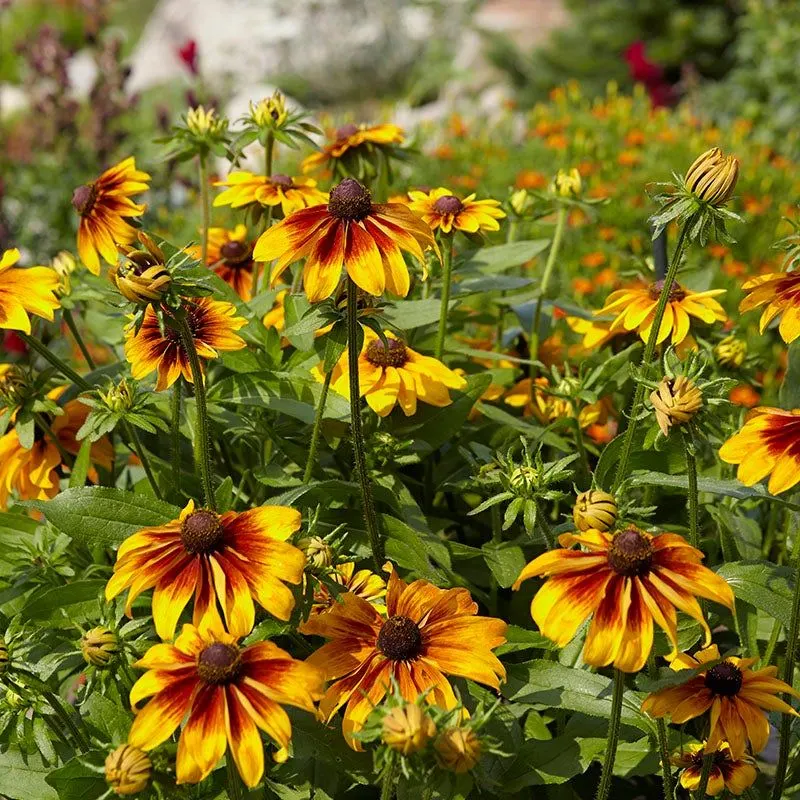
Rudbeckia, often called black-eyed Susan, provides a bold splash of color with its golden petals surrounding dark centers. These hardy perennials are incredibly easy to grow, thriving in sunny locations and well-drained soil. They bloom from mid-summer to fall, attracting butterflies and bees to the garden. Rudbeckia’s long blooming period and low maintenance requirements make it a favorite for gardeners seeking both beauty and pollinator appeal. Their cheerful appearance brightens garden spaces effortlessly.
Coreopsis
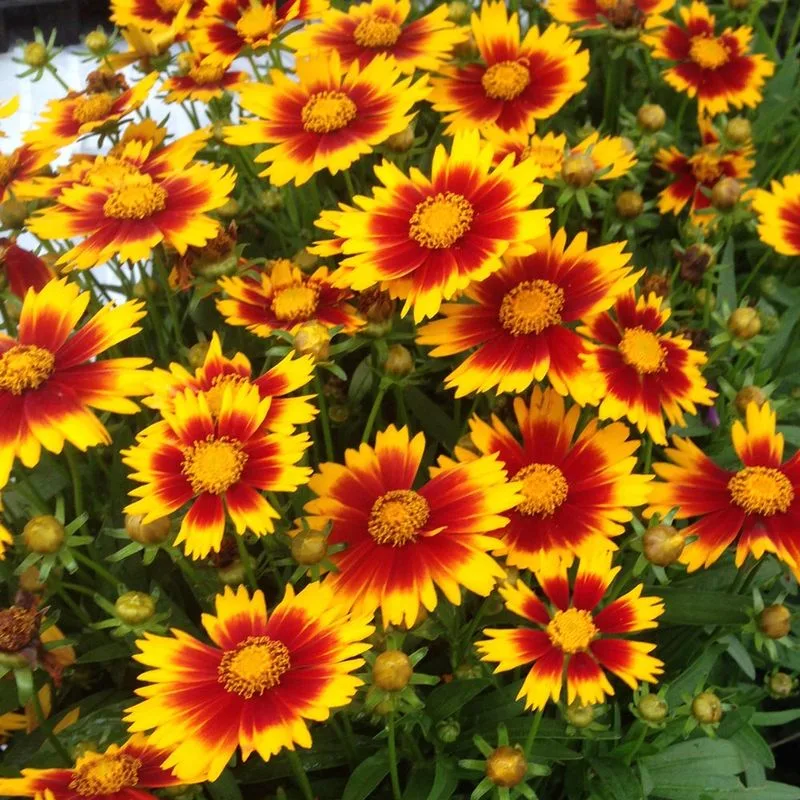
Coreopsis, known for its bright, daisy-like flowers, brings sunshine to any garden space. These perennials are drought-tolerant and thrive in full sun, making them ideal for low-water landscapes. Blooming from early summer to fall, they provide a long-lasting display that requires minimal care. Deadheading will encourage more blooms, ensuring a continuous burst of color. Coreopsis is perfect for borders and wildflower gardens, offering an easy way to introduce vibrant hues and attract pollinators.

